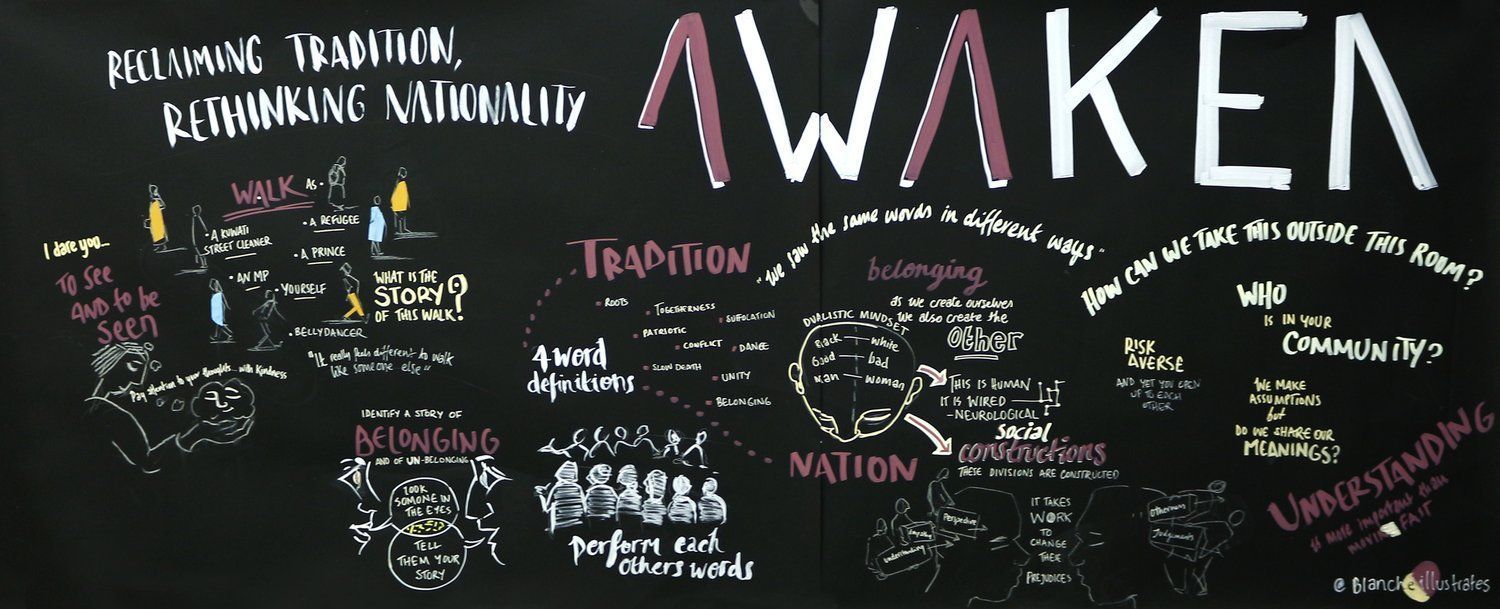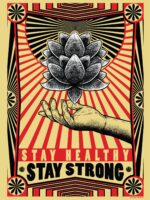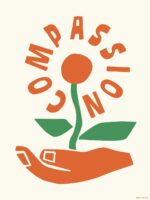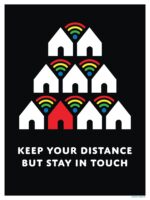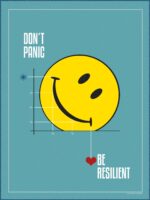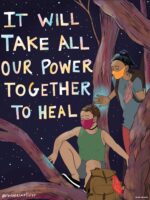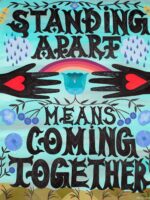Healing From Trauma: The Leadership Skill You Didn’t Know You Needed Healing From Trauma: The Leadership Skill You Didn’t Know You Needed
A CONVERSATION WITH:
Benoît Legrand
Business leader, psychogenealogist, former CEO and Chairman
🌍 Paris, France
As the conversation around the impacts of trauma in the social change sector continues to grow, changemakers can take an opportunity to reflect on how their wellbeing impacts their leadership skills.
Last November, TheMerode Club brought together seasoned executives from the government, business, civil society, and academic sectors to reflect on wellbeing at the individual, collective, and planetary levels.
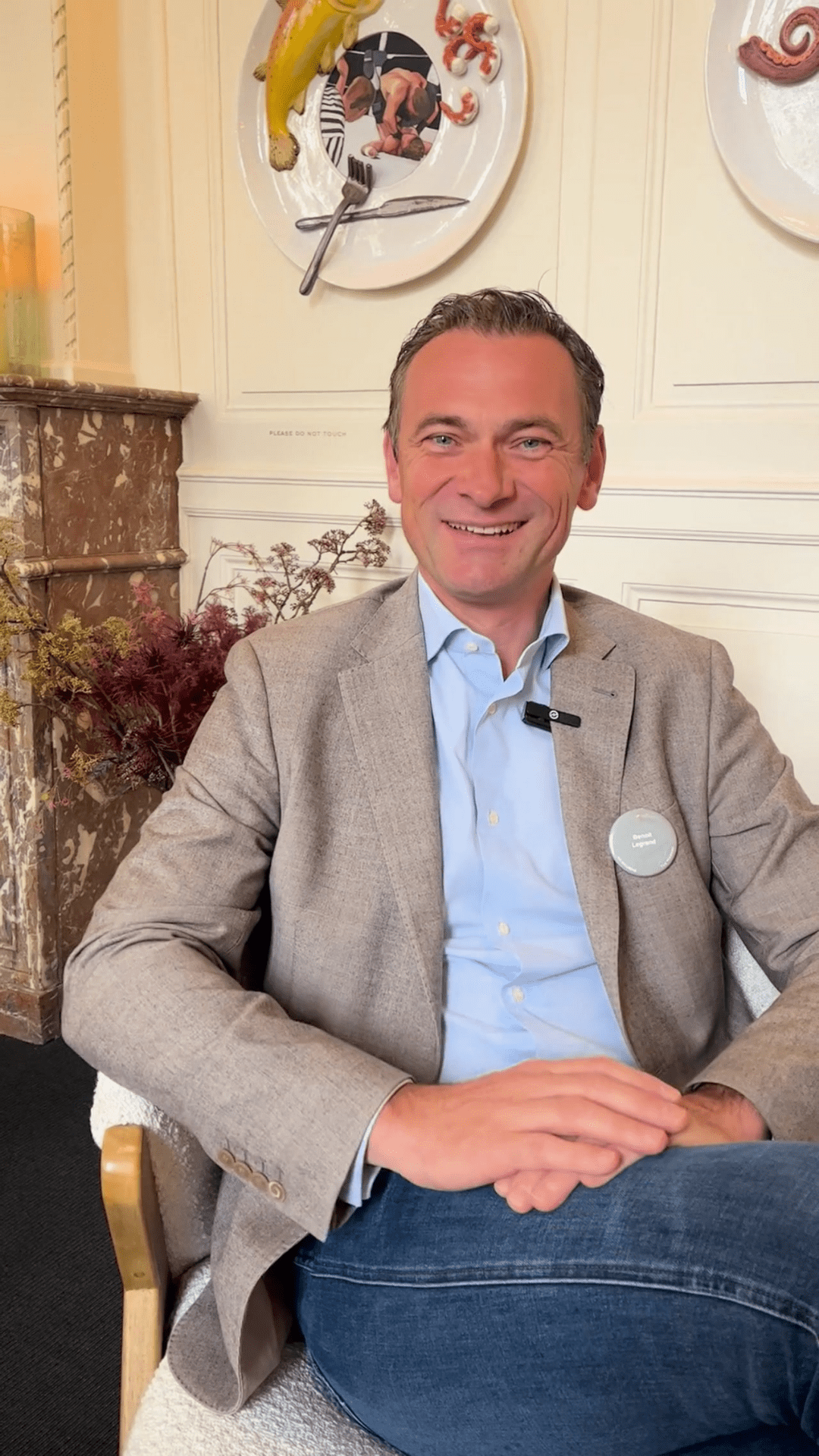
Benoît Legrand, a visionary business leader with over 25 years of experience in various C-level positions in the European financial sector, joined The Wellbeing Summit Brussels to share reflections from his career in business and newfound venture as a psychogenealogist.
Speaking on a panel about the impacts of intergenerational trauma with The Wellbeing Project’s co-lead, Aaron Pereira, and Katherine Milligan, Director of the Collective Change Lab, Benoît encouraged changemakers to connect the individual with the organizational by asking themselves: how do my traumas impact my leadership style?
We sat down with Benoît to dive deeper into this topic. Drawing on his business and personal experiences, hear from Benoît about why acknowledging and addressing one’s traumas is an essential leadership skill, plus encouragement for leaders to start this important journey.
“It should be part of the essentials of leadership. Because, knowing your own darkness is, I think, the best method for dealing with the darkness of other people. You cannot have change, have people change, and change yourself before you accept that something is really wrong. Right?”
Tell us about the impacts of trauma.
Trauma, for me, is something which we all go through, and something absolutely necessary to be aware of to give the best of yourself and find your place in this world. The idea of “trauma” might give or have a sense of drama, which is of course very true when we think about those very macro-level traumas which have affected large populations or very deep traumas that some individuals can go through. Yet, trauma goes also into more subtle dimensions of things which traumatize you. You can be affected by what happened to you consciously, but also by what happened in your family, school, community, country, continent, or race. These impacts are being inherited, which we see now from an analytical and empirical point of view. So in a way, we are all traumatized. But it’s okay. The point is merely for every one of us to just first acknowledge it, dare to look at it and think beyond everything which we know consciously.
I’ll always have in my mind what Carl Jung said, “who looks outside, dreams, and who looks inside, awakes.” I’ve learned that from this process. I thought just looking outside would make me smart and intelligent. But the awakening comes from looking inside of myself, not being scared and not being afraid. By facing reality, we can unlock a lot of situations.
Leaders care about so many people and they don’t want to let anyone down. But they should realize that if they go down themselves, they let everyone down.
When leaders do inner work, including healing from trauma, how does it impact their organization’s wellbeing?
It’s just essential to face your trauma as a leader. You will notice anyone who’s just going out there and showing his vulnerability, just making himself more human. As a leader, if you effectively radiate this positive energy, then it diffuses around the organization. It’s a bit like a pendulum: if at the very top, the positive radiation is there, the radiation at the bottom will be just proportionate. And if the organization is big, or you go to a company or a country, then the impact you can have is just immense. So it’s our own responsibility to think for ourselves: What do I want to be in this world? Do I want to be an agent of positive radiation? Or do I still want to keep all this hatred and and violence and fear and negative energy in myself and overload the world with that right?
Do you think leaders understand the importance of caring for their wellbeing?
Let’s say, okay, we know it’s important to eat. We know it’s important to sleep. We know it’s important to read good things. But do we take, as leaders, the time to step back to sit with someone and just have a conversation? Get a couple of things out, talk and discuss, just to say, “Well, I’m not alone here, right?” and to take care of yourself? It’s fantastic because leaders care about so many people and they don’t want to let anyone down. But they should realize that if they go down themselves, they let everyone down. So having a preventative strike, taking a step back, breathing it, having a discussion and looking at your psychological health is very important. But that can be very hard for leaders, to say, “I need to ask for help.” I personally have been very bad at this.
Can you tell us a bit more about that?
I’ll just testify what I’ve been through. I was having a very intense business life. I was managing teams all over the world and travelling 80% of the time. I was also under heavy stress, with a new CEO that was misaligned with what I was thinking. There was a combination of things, including me having worked like hell for the last 20 years, going all over the place, with pressure from left to right. And at one point, my body – because my brain didn’t want to understand it – sent the signal: stop. My heart gave me a very strong signal that I needed to stop. I stayed in the hospital for four or five days, where I realized that I went over a limit because I was not sufficiently courageous to face my limits and ask for help.
I kept denying reality. I thought, because I’ve been through so many challenges and successes as a leader, I’m going go through it this time also. I’m not going to ask for help or say I’m vulnerable. But the second problem is once you effectively realize you’re not OK and you might not manage to deal with the situation, there’s some kind of taboo. So you just keep fighting on your own. This is what leaders might face. I know that in France, about one out of two leaders or entrepreneurs is close to being in burnout. One out of two, which is just dramatic.
So what should leaders be doing to care for their own wellbeing, which then will have a positive impact on their organizations?
You, as a leader and manager, have been doing nothing else than daring right? You have been taking risks. This is what you do daily. But there are also risks to take about yourself so you can see a couple of things. It’s okay. You will be more powerful by doing it. And really, what do you have to lose? Even if you’re 40, 50, 60, you still have life to live. What do you want to do with it? So look forward and say, “Is it worth taking the time and challenging myself just to try to be at the best place can be on this planet?” If you take that time, once you’re there, nobody can stop you.
Look forward and say, “Is it worth taking the time and challenging myself just to try to be at the best place can be on this planet?” If you take that time, once you’re there, nobody can stop you.
And the systemic approach is so powerful. We live in systemic environments: whatever changes something which influences something which changes, and so on. Once you start talking about something, you see things happening around you. The power of communication, daring to put things on the table and explain things, starts to unlock a lot of things that can bring a lot of peace.
But do this in a secure environment: bring safety and security around you. It can be hard, but if you do it with the right spirit of care, love, and positivity, it will come right back to you.
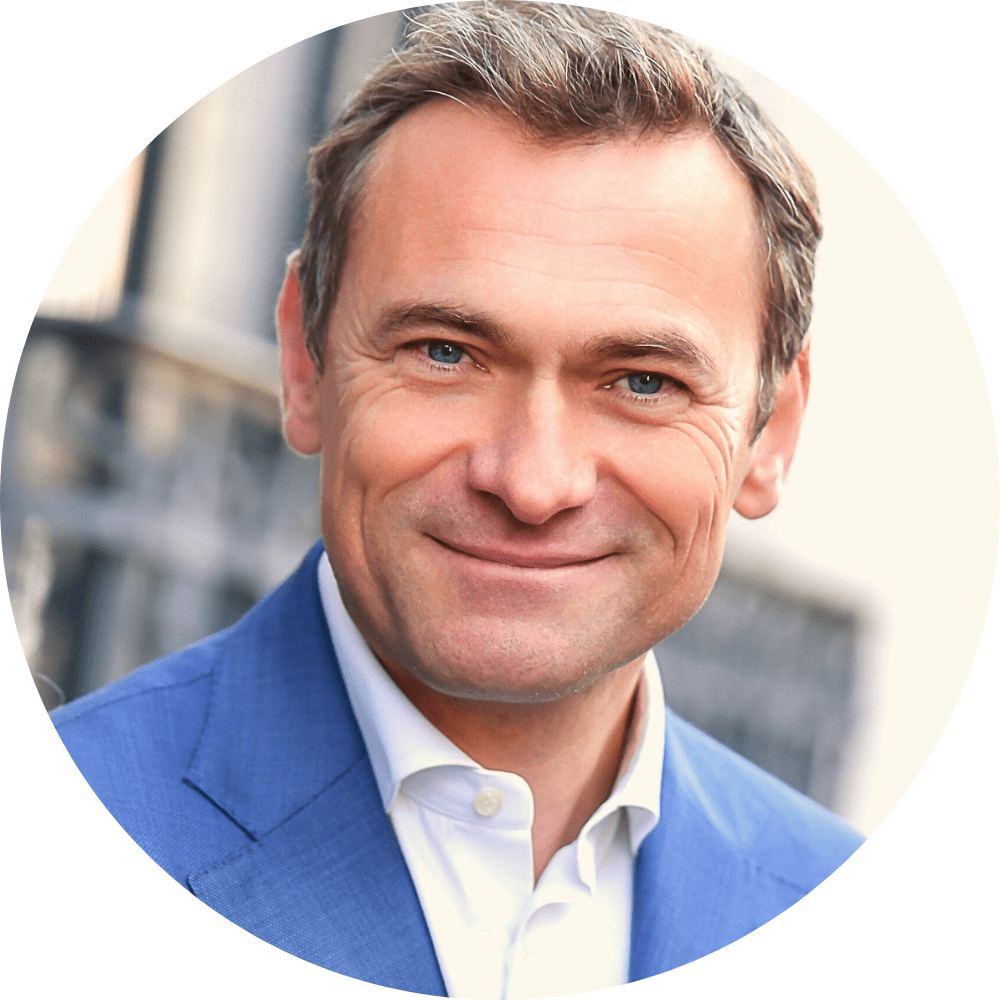
About Benoît
Benoît Legrand is a visionary business leader with over 25 years of experience in various C-level positions across multiple countries. Throughout his career, Benoît’s driving conviction has been centered around putting people at the heart of the company. He believes in genuine care for employees and customers to achieve lasting success. Having served as CEO of ING Direct France, Country CEO of ING France, and Chairman of ING France, he demonstrated his dedication to innovation by spearheading ING Ventures, the EUR 300m Corporate Venture Capital arm. After leaving ING in 2021, Benoît now advises organizations on innovation and transformation. He holds degrees in International Relations and Economics. Belgian and based in France for over 10 years, he has lived in 8 different countries and speak 5 languages.
Want to know more about trauma and its impacts?
Watch the first virtual convening in our webinar series hosted by The Wellbeing Project and the Collective Change Lab. You can also visit our new hub for research and stories on intergenerational trauma. Together, we explore how we can move from trauma-informed to healing-centered ways of working for systemic change.
Discover the Wellbeing Movement in Europe Discover the Wellbeing Movement in Europe
Meet and hear stories from the changemakers championing the wellbeing movement in Europe.
Welcome to the Good Feeling House: Home to Peer-to-Peer Youth Mental HealthcareWelcome to the Good Feeling House: Home to Peer-to-Peer Youth Mental Healthcare
INTERVIEW WITH:
Thieu Scheys
“Conflixer” student volunteer at the Goed Gevoel Huisje (The Good Feeling House)
🌍 De Prins Secondary School, Diest, Belgium
In 2022, a passionate 17-year-old student, Noor Van Reet, won a grant to construct a small house on her school campus where peers could counsel and support each other about mental health.
Today, the Goed Gevoel Huisje (or “The Good Feeling House”) welcomes students of all ages at the De Prins Secondary School to join their peers for a moment of calm, connection, and creativity throughout the school day. Students are trained as “Conflixers” by mental health professionals from the Flemish School Association (VSK) on how to provide age-appropriate peer support in an inviting and welcoming space. Seventeen-year-old volunteer Thieu Scheys joined the Peer-to-Peer Wellbeing Practices Forum at The Wellbeing Summit Brussels to share with changemakers the youth perspective on mental health and community wellbeing. Here’s his point of view.
What is the Goed Gevoel Huisje ?
The Goed Gevoel Huisje (the “Good Feeling House”) is a wooden house built on the playground of our school where students can come talk about their problems with other students. They can also come to hang out, play board games, and read books. We also plan other activities in the house outside of school. It’s a very cozy and fun place.
How does it work?
People can walk in to hang out or start talking to us, or they can send us a message beforehand about what they may want to talk about. We received training about how to talk to kids about their feelings and how to listen to them. We also give everyone the option to sit in different places at school to talk, because the house is on our playground where everyone can see, and maybe they want to talk in a private space.
How did the Goed Gevoel Huisje start?
It started with a student named Noor. When she was little, she was in the hospital for a while and couldn’t go to school. She realized how hard it was to be alone and have no other students or friends around to talk about her feelings. So she had the idea for the Good Feeling House and won a competition in Europe with the idea, which gave her a budget. Our school agreed to build the house on the playground and the company Wood-You built it based on our designs.
Why do you think the Goed Gevoel Huisje is important for your school?
Some people have good home environments where they can talk about their feelings but some people don’t, so it’s nice for kids to have a place at school where they can talk about their feelings with other students. It can also be really hard for kids to talk to adults about what’s going on because of the age difference. The volunteers are in the fifth year of school and we’re mostly focused on inviting students from the first and second grade to join. It’s easier to talk to someone when they are closer in age to you.
How can kids support each other with their mental health?
I think kids can support each other by listening to someone else, but also saying if they have a problem. If you can give an example, and other people feel that it’s possible to share their feelings, then it becomes something that just becomes so normal to talk about. It becomes an open conversation. In society, I don’t think it’s very normal and it would be really good to get rid of this stigma.
The Flemish School Association (VSK) equips students to serve as peer supporters with conversational skills for talking about mental health and resolving conflict. Conflixers also learn about topics like bullying, harassment, mental health first aid, hate speech, bias, and more.
“It is often small things that affect the atmosphere or wellbeing of students at school. The Conflixers are doing something about it!
Conflixers are students who support other students at their own school where necessary. It can take different forms, but one thing is certain:
students will get it done.“
What have you learned since being involved with the Goed Gevoel Huisje?
We all had training about how to talk to each other about our feelings and mental health. It was really interesting because I learned that when we communicate, we often put our perspective on the other person. The main thing we can do to help each other is listen, not look at ourselves, and maybe not offer them a solution — just listen to the other person. It’s also important to take the time to care for ourselves and sometimes say no to other people. Sometimes, saying no to other people and thinking a little bit about yourself will mean that you can give more to other people eventually.
I’ve also learned how fun it is to be involved in a project. It’s very nice to work with other people, do activities, and do nice things for other people.
What is wellbeing to you?
I think wellbeing is feeling good in your skin, having the chance to do what you like, be who you are, and just feel good in general. I think other kids would agree with me that it’s about feeling good and happy in general, without too many bumps on the road.
What do adults not understand about young people’s mental health?
I think most adults are doing a good job helping young people express their feelings. Teachers, for example, do a lot for us. But I think they don’t understand that it can be very hard to go to someone who is a lot older than you. That can be a really big step, so we’re trying to make that step smaller so students will be quicker to act when something is wrong.
What do you need from adults to see the change you want in the world — to make it easier for kids to talk about their mental health?
I think adults need to be more open about how they feel. With kids, they may not want to share how they are feeling. But I think that if they start sharing from a young age, like if they are tired or not having a good day, then it will be easier for the young kids to share the same when they are older.
What advice do you have for other youth who want to do something positive in their community?
Spread the word about your project and just have fun! Make a good impression on the world and hopefully start to make it a better place. There are a lot of different little projects in the world and eventually, the world will become a much better place.
If someone wanted to start a Feeling Good House at their school, what would you tell them?
All schools are different and all people are different so just see what works for you. Do whatever you want and fun!
Discover the Wellbeing Movement in EuropeDiscover the Wellbeing Movement in Europe
Meet and hear stories from the changemakers championing the wellbeing movement in Europe.
How I’m Transforming My Social Change Approach With Wellbeing How I’m Transforming My Social Change Approach With Wellbeing
Stories from the Hearth
Guest post by:
Amos Leuka
Director, Living Culture and Climate Alliance (LCCA)
🌍 Loita Maasai community, Loita, Narok County, Kenya
Amos Leuka, director of the Living Culture and Climate Alliance (LCCA), from the Loita Maasai community in Loita, Narok County, Kenya, attended The Wellbeing Summit Dakar-Thiès in November 2023. Listen to his journey of learning, inner reflection, and motivation as he shares his reflections on the gathering.
The LCCA promotess culture and climate adaptations in Africa and in particular, Kenya. It enables indigenous communities to promote their bio-cultural rights and supports them to be economically and culturally resilient, capable of managing their land systems and biodiversity. By building this solid base, providing leadership, technical and facilitative support, and using Participatory Video, LCCA creates a space to connect all indigenous communities and enable them to gain influence on climate issues affecting them, maintain their languages and use indigenous knowledge systems to manage their lands, social change and shape their future.
EXPLORE THE REGIONAL SUMMITS FURTHEREXPLORE THE REGIONAL SUMMITS FURTHER
Dive Into Stories From Around the World
Discover the Wellbeing Movement in Africa Discover the Wellbeing Movement in Africa
Meet and hear stories from the changemakers championing the wellbeing movement in Africa.
Building a Brighter Future for The Gambia, Africa, and Beyond Building a Brighter Future for The Gambia, Africa, and Beyond
Stories from the Hearth
Guest post by:
Dr. Margor A. Green-Harris, MD
Medical Officer, Edward Francis Small Teaching Hospital
🌍 Banjul, The Gambia

Once upon a time, in the heart of Sengeal “Rew Taranga” a diverse group of changemakers gathered for The Wellbeing Summit Dakar-Thiès —a transformative event that promised to reshape the future of the continent. Among them was I, a passionate advocate for social and behavioral change and holistic wellbeing.
As the Summit unfolded, I immersed myself in a rich tapestry of workshops, discussions, and cultural exchanges. I eagerly participated in sessions on yoga and mindfulness, recognizing their potential to enhance my wellbeing and activism.
During a panel discussion on “The Africa We Want,” I experienced a profound shift in perspective. Inspired by the vision of a continent united in peace and prosperity, I realized the power of collective action to bring about meaningful change.
However, I also became more aware of the challenges facing grassroots movements and community initiatives. Too often, well-intentioned projects were sometimes derailed by external interests and agendas, leaving local communities disenfranchised.
Determined to make a difference, I resolved to prioritize the voices and needs of my fellow activists and volunteers. I refused to let external sponsors dictate the direction of our work, advocating for autonomy and integrity in all our endeavors.
As The Wellbeing Summit Dakar-Thiès drew to a close, I felt a renewed sense of purpose and possibility. Armed with new insights and connections, I returned to my community with a commitment to holistic wellbeing, grassroots activism, and the Africa we all wanted to see.
And so, inspired by the spirit of unity and determination I had witnessed at the Summit, I continued my journey, knowing that together, we could build a brighter future for The Gambia, Africa and beyond.
EXPLORE THE REGIONAL SUMMITS FURTHEREXPLORE THE REGIONAL SUMMITS FURTHER
Dive Into Stories From Around the World
Discover the Wellbeing Movement in AfricaDiscover the Wellbeing Movement in Africa
Meet and hear stories from the changemakers championing the wellbeing movement in Africa.
Strengthening Community Resilience in Kuwait with Storytelling Strengthening Community Resilience in Kuwait with Storytelling
Insights from en.v’s Eleanor Burton and Mohammed Marafi
With a vision of a united, compassionate and resilient society, a small organisation is making a big impact on collective wellbeing across the Gulf states.
en.v facilitates positive social transformation within Kuwaiti society with an integral focus on empowering Kuwait’s migrant population – as well as youth and other traditionally silenced communities – through storytelling. Recognised by the International Labour Organization (ILO) for its impactful work supporting the human rights of migrant workers, en.v practices community-building through socially responsible ways. We talked with Eleanor Burton, en.v’s training and relationship manager, and Mohammed Marafi, en.v’s programs manager, about their use of storytelling as a tool for social transformation. Here’s how they do it.
Storytelling to Build Trust, New Narratives, and Healing Bridges
As an organisation committed to the collective wellbeing of communities in Kuwait, an integral focus for en.v is on the country’s migrant population, whose wellbeing is significantly impacted by the grave consequences they often face working under the Gulf labour market’s kafala system. Broken trust, mistreatment, and abuse are common, as are trauma and mental health struggles. Beyond legal frameworks, cultural attitudes in Kuwait have helped normalise the effects of the kafala system: with certain long-held beliefs about migrant workers and commonplace employment practices, de-facto segregation and a deeply ingrained power balance are the norm.
While important efforts are in motion to update migrant worker schemes in the Gulf and protect migrants’ wellbeing, en.v recognises migrants themselves are missing from these conversations. In response en.v passes the mic to the migrant community in Kuwait to support systemic change from the ground up. Working with employers of migrant workers and the migrant community, it offers spaces for both groups to meet and begin to build healing bridges. The process is complex, but it is working, and its Global Migrant Workers Network (GMWN), Compassionate Communities programme, and BUILD Ideathon community projects have been recognised as important actors in this process.
“The insight and connection with and from the vast network and community that en.v has nurtured over the years is unrivaled. Their ability to get straight to the beneficiary and those most in need has been inspiring to witness, and a great honour to support.” – International Labour Organization
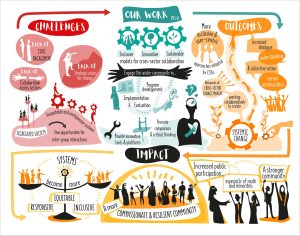
en.v’s Theory of Change (Credit: en.v/@blancheillustrates)
en.v’s community-led approach to social change is founded on bringing different groups together to work across differences. Building bridges that lead to social change is a complex process – and for en.v, it all starts with a story.
“In every single piece of our work, whether it’s with labour inspectors, activists in the migrant community, domestic workers, students, academics, or officials from the ministry, we always start with storytelling and connection,” says Eleanor. “We start with some sort of space where we try and get people into an intimate, authentic conversation with each other. It’s in every single thing that we do – having that first moment of building trust and connection, but in safety.”
As different people come together – many for the first time – to express themselves and listen to each other, these moments of connection are rich with opportunity. They help pave the path to reconciliation by the way of self-exploration, bonding, and movement-building. With long-held beliefs contributing to divisions within the community, this is an important step towards sustainable behavioural change.
“It changed my viewpoints on others around me. I lived in a bubble and thought that there wasn’t a community of people who genuinely wanted change too.” – en.v BUILD Ideathon Participant
The AWAKEN journey.
In supporting the migrant community, this storytelling can involve facilitating conversations between workers and employers and creating space for both groups to reflect on their experiences with their peers. For example, generations-long employment practices in the Gulf shape how employers view domestic workers and how domestic workers view themselves. Through dialogue, en.v encourages everyone to practice self-inquiry and reflection. Sharing one’s story and listening to others serves as a foundational, and often emotional, step towards reconciliation.
“With storytelling, we can think about roots and forces shaping our value systems,” says Eleanor. “We can ask questions: what’s your power in the society? What privilege do you have? How do you move through the society? It’s ultimately a practice in building empathy, deconstructing a lot of the cultural norms, and thinking about how we relate to one another.”
One example of a project defined by storytelling is en.v’s Women’s Circle Project. Held in partnership with the International Labour Organization’s FAIRWAY Project, it brings together female employers of domestic workers in safe spaces to talk about employment practices. These Women’s Circles help to shift employer mindsets, leading to improved relationships and increased fair treatment of workers.
Storytelling with the migrant community also focuses on understanding values and shifting mindsets, while also caring for the deep traumas felt by the community. Their experiences in Kuwait are often defined by deep feelings of loss: a loss of self while facing exploitation at work and having to support family back home, and a loss of community due to the transient, impermanent type of residency available under the kafala system.
In response, en.v uses storytelling to help the members of the migrant community create a new sense of self and belonging, which can help strengthen their resiliency, increase feelings of agency, and promote healing – an empowering process that helps unlock doors to a new future.
Mohammed explains this process is essential for empowering community-led action: “If you want for people to really feel like they want to change this place, they first have to feel like they belong here. A lot of what we try to do in our work is try to create a space within Kuwait where they can at least feel like they belong to each other.”en.v helps create these spaces physically – with community gatherings such as its AWAKEN festival or its Aswatna program promoting inclusion in the country’s schools– and figuratively, through various activities such as Mapping Belonging and art therapies. Through different methodologies practiced in safe spaces, migrant and other traditionally silenced or marginalized communities are offered the opportunity to own, share, and rewrite their stories.

While the process of behavioural and systemic change is complex and challenging, these meaningful moments of storytelling are also important marks of progress. At the heart of this storytelling is a true sense of compassion and unity, says Eleanor: “It’s very intimate. It’s really loving work we do, that creates a space where people can really connect.”
With a vision of solidarity among communities in Kuwait, these emotional connections are the first step towards community wellbeing and healing.
en.v is a proud member of The Wellbeing Project’s Wellbeing in Higher Education Network. Learn more about en.v’s work to foster transformational leadership and community-building in the Gulf at www.envearth.com.

Welldoing ToolWelldoing Tool
Mapping Belonging
Contributed by en.v (Kuwait)
“Mapping Belonging” is a social cartography exercise that consists of identifying the different emotions that we associate with the different places where our lives (and the lives of other members of our society) take place. It encourages us to explore, from a place of curiosity, our conceptions of identity, belonging, difference and otherness, and gain deeper insights about our individual and collective lived experiences.
It is a tool that serves as a participatory and experimental research method, while also creating a positive impact on the participants in the process of being implemented: it increases our ability to understand social diversity and empathize with other perspectives and values.
Collective emotional mapping takes us out of the bubble of our individual worldview and shows us that we are part of a larger system where many different people find many different sources of meaning. A higher sense of self-awareness and social awareness are both key ingredients to the process of strengthening community bonds from a place of compassion and resilience, and they establish the grounds for positive interpersonal interaction and transformative change.
en.v has been working with its AWAKEN Community of Practice to further refine and test out this tool, and facilitate it across diverse communities in Kuwait, collecting valuable data and promoting self-reflection and connection.
How to Practice
What you will need: a map of your location, coloured stickers corresponding to the emotions chart, cards, and writing materials
Step 1
Welcome participants into the space and tell them a little bit about the exercise. Facilitators can add whatever they consider suitable to this explanation and refer to examples from their personal experiences.
Step 2
Introduce a warm-up / ice-breaker. Before the mapping activity, invite the group to do a short exercise to warm-up and break the ice for about 10 minutes. The activity is called “story-slam”: participants will be asked to get into two lines facing each other and give a 1-minute answer to the person in front of them (at each turn) to the questions that the facilitators will ask out loud. After one minute, one of the lines will move one spot and each participant will be facing someone new and giving an answer to a new question. Facilitators can choose any of the following questions during five rounds:
What is your favourite place in [location]?
Where do you live and have you ever lived in that area?
What place in [location] brings up happy memories and why?
Where do you go when you want to relax?
Where in [location] do you eat the best food?
What are your favourite family spaces?
What is a space that doesn’t feel like [location]?
Are there places in [location]that you avoid? Which ones and why?
What are the places you frequented as a child?
If you have a friend coming to visit [location] for the first time, where would you take them and why?
Step 3
Begin the Mapping Belonging exercise. Start by explaining the activity: it’s an exercise that consists of identifying the different emotions that we associate with the different places where our lives take place. Facilitators will ask the participants to look at the map of their location, with its different zones and areas, and identify the places where they feel these emotions:

While looking at the map and identifying the areas where they feel the different emotions (they can choose 3-4 places for each emotion), participants can take coloured stickers that correspond to the emotions and place them on the chosen areas of the map. This part of the activity can last 10-15 minutes.
Step 4
Go deeper with story cards. After they have finished placing the stickers in the corresponding areas, facilitators will give them a set of cards that contain some questions about the mapped emotions and ask them to write their answers on the cards. Encourage participants to keep their answers short and sweet and use only the space on the cards. This part of the activity can last 20-25 minutes.
Step 5
Conclude with a group discussion. After participants are done filling in the cards, host a short collective debrief (5 minutes) around the two following questions:
What did it feel like to place the emotions on the map? Are there any reflections or emotions that this exercise brought up for you?
How can we make spaces in [location] more inclusive?
About en.v
We are a culturally diverse and interdisciplinary team of current and former Kuwait residents and nationals working together to foster a more united, compassionate and resilient society – locally and globally. Over the past decade, we have been working with and building bridges between a wide array of stakeholders, including corporates, governmental, intergovernmental and international institutions, foundations, educators, youth, civil society organizations and migrant community groups. Leveraging our own and our partners’ learnings, experience and networks, we design and facilitate inclusive and participatory processes that support the development of more equitable solutions and narratives. Specifically, we:
Develop training and programming which promotes informed empathy, critical thinking, and intersectional frameworks
Support the development and institutionalization of more inclusive and equitable processes and policies
Bring together multiple stakeholders to collectively address complex problems, envision possible futures and promote social transformation.




